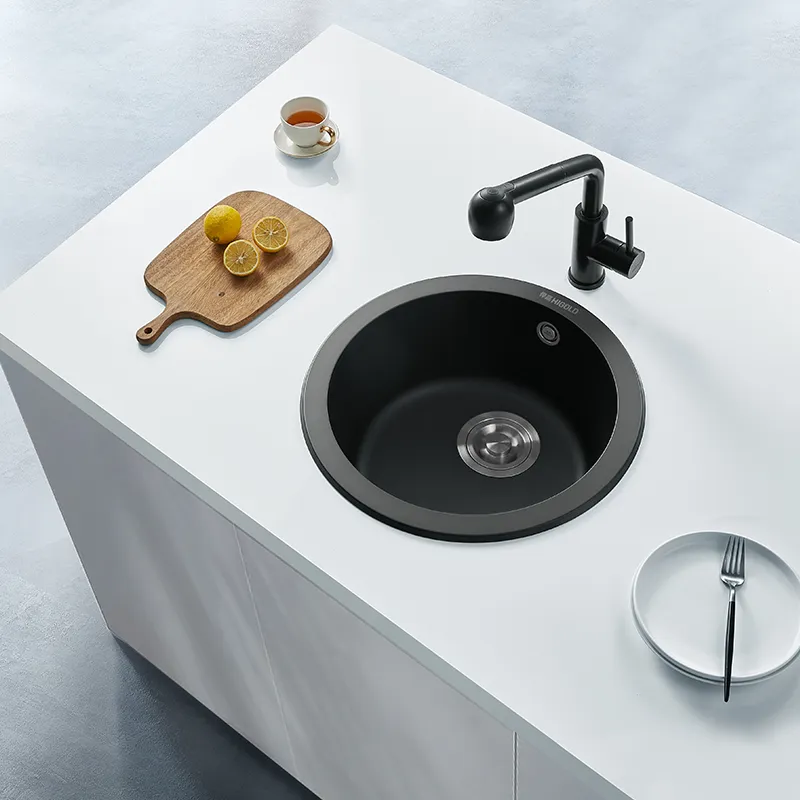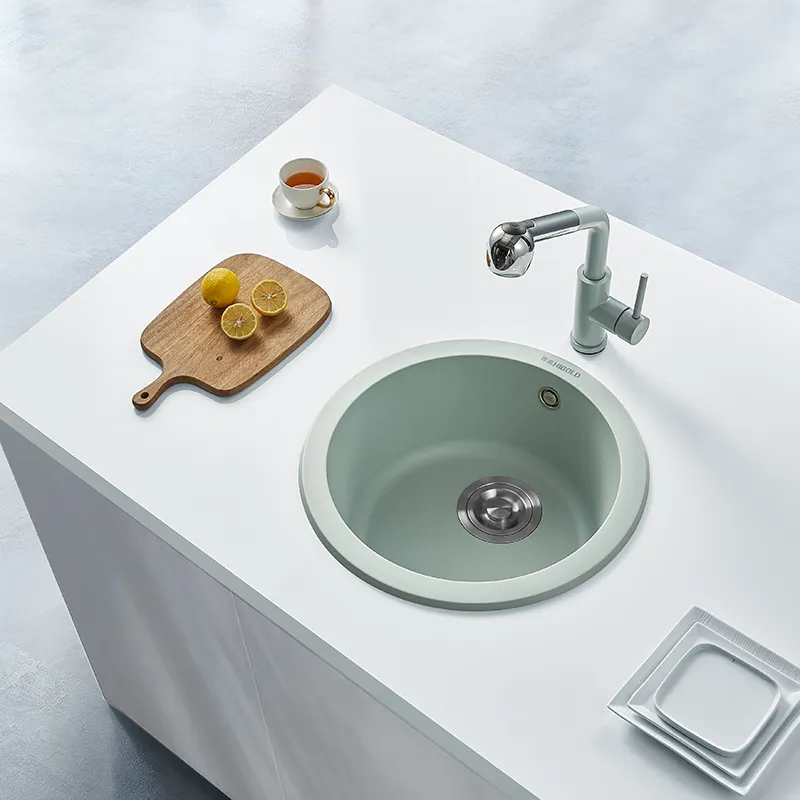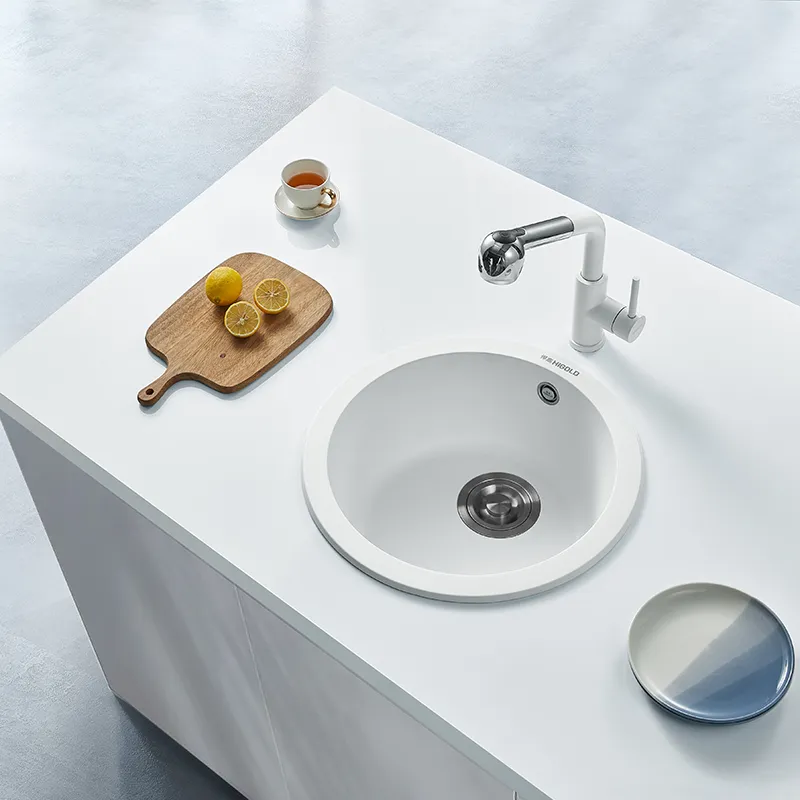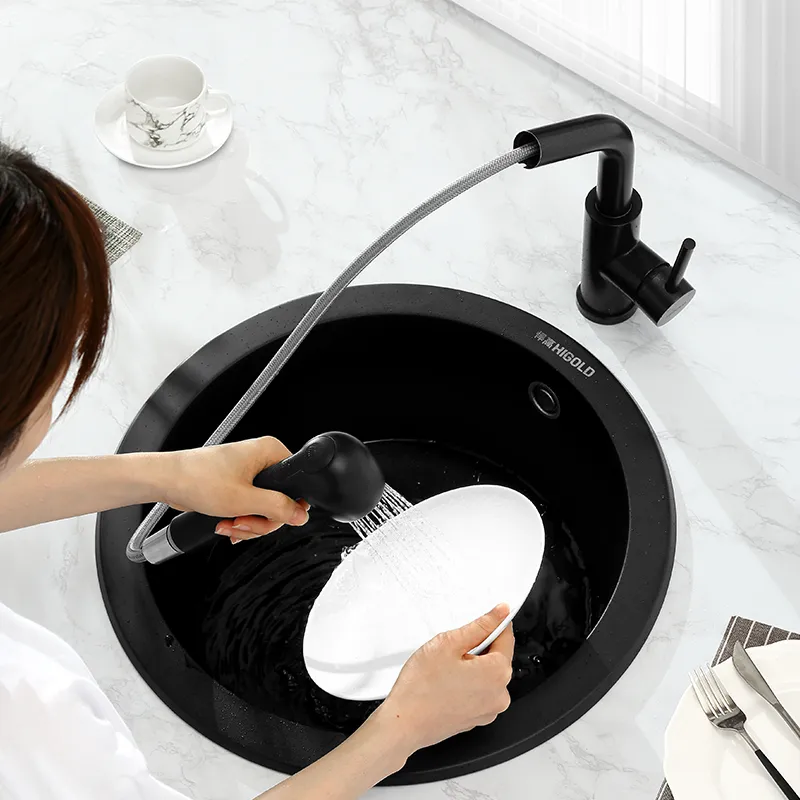As one of the most important facilities in the kitchen, the sink is not only related to the functionality and aesthetics of the kitchen, but also directly affects the convenience and comfort of daily life. Especially in daily cooking, cleaning and washing, the size, shape and design of the sink are crucial.
As a type of sink design that is becoming increasingly popular, undermount kitchen sinks have become the choice of many families with their modern and simple design style. However, many people still have questions about the standard size of undermount kitchen sinks and do not know how to measure and choose the right sink size when purchasing.
This article will discuss this topic in depth to help consumers fully understand the standard size of undermount kitchen sinks and make more informed choices.

What is an undermount kitchen sink?
Before understanding the standard size of an undermount kitchen sink, we first need to understand what an undermount sink is. An undermount kitchen sink is a design that installs the sink under the countertop. Unlike traditional topmount sinks, the upper edge of an undermount sink is hidden under the countertop, so the edge of the sink is directly in contact with the countertop, which looks smoother, and there is no exposed edge around the sink, which makes cleaning easier. At the same time, the design of the undermount sink allows the countertop to be seamlessly connected to the sink, which is not only beautiful, but also reduces the accumulation of dirt, which is conducive to keeping the kitchen clean.
Undermount sinks are usually made of stainless steel, composite quartz, ceramic and other materials, among which stainless steel and composite quartz sinks are more common. Different materials and design styles may affect the size requirements of the sink, so understanding the standard size is crucial to choosing a suitable undermount kitchen sink.

What is the standard size of an undermount kitchen sink?
When choosing an undermount kitchen sink, size is one of the most critical factors. The correct sink size can ensure smooth installation and allow the sink to better integrate into the overall kitchen design. Generally, the size of an undermount sink is related to the width, depth, length and size of the installation space. The following are the common standard sizes of undermount kitchen sinks:
1. Single-bowl sink size
A single-bowl sink refers to a design with only one large sink, which is suitable for kitchen environments that require a large space to wash large kitchen utensils or ingredients. Single-bowl undermount sinks usually have the following sizes:
· Width: The width of a single-bowl sink is generally between 30 cm and 50 cm, and the specific size can be selected according to actual needs. For general family kitchens, a sink width of 40 cm to 45 cm is more common, which can meet daily cleaning needs without taking up too much kitchen space.
· Length: The length of a single-bowl sink is usually between 60 cm and 80 cm. Longer sinks are suitable for kitchens where families need to frequently wash large tableware, basins and other items.
· Depth: The depth of a single-bowl sink is generally between 20 cm and 25 cm. If you have more dishwashing needs or need to place larger ingredients, you can choose a sink with a larger depth.
2. Double-bowl sink size
Double-bowl sinks are usually suitable for kitchens that need to be washed or operated in different areas, such as when you need to handle washing ingredients and tableware separately. The dimensions of a double-bowl undercounter sink usually include the width, length, and depth of the two bowls:
·Width: The width of a double-bowl sink is usually 20 cm to 30 cm per bowl. A wider sink design helps increase washing space, but an overly wide design may cause the sink to take up too much countertop space. The width of each bowl is commonly 24 cm to 30 cm.
·Length: The length of a double-bowl sink is usually 80 cm to 100 cm, and can even reach 120 cm or longer. The longer design allows enough space for the two bowls, which is suitable for kitchen environments that require multiple operations at the same time.
·Depth: The depth of a double-bowl sink is similar to that of a single-bowl sink, usually 20 cm to 25 cm. A deeper sink is more suitable for washing large kitchen utensils.
3. Specially designed sink sizes
In addition to the common single-bowl and double-bowl sinks, there are some special designs, such as multi-function sinks (sinks with additional functions such as vegetable washing area, cutting board, drain rack, etc.). The sizes of these sinks vary according to functional requirements, but most of them are kept between 60 cm and 100 cm in width and length, and the depth is generally between 20 cm and 30 cm.

How to choose the size of an undermount kitchen sink?
Although the standard size of an undermount kitchen sink has a certain reference range, when actually purchasing, it is also necessary to consider factors such as the layout of the kitchen, the size of the countertop, and the use requirements. The following are several key factors to consider when purchasing:
1. The size of the kitchen countertop space
The size of the countertop space directly determines the size of the sink. When choosing an undermount sink, you need to ensure that the size of the sink matches the kitchen countertop. A sink that is too large will take up too much space and affect the use of other kitchen equipment. A sink that is too small may not meet the needs of daily cooking and cleaning. Therefore, it is important to measure the size of the countertop and choose the right sink size based on its available space.
2. Use requirements
The size of the sink should be selected based on the number of family members and the frequency of kitchen use. For example, if there are multiple people in the family and the kitchen needs to be used frequently, a larger double-trough sink can be selected, and partitioning is more efficient. For a single-person household or a kitchen that is used occasionally, a single-bowl sink may be sufficient to meet the needs.
3. Sink material
Sinks made of different materials also vary in design and size. For example, stainless steel sinks are usually thinner and have more options in size; while quartz sinks or ceramic sinks are usually thicker and may have some restrictions on size. Therefore, when choosing a sink material, you also need to consider the size requirements of the sink.
4. Functional requirements
With the diversification of kitchen functions, many consumers tend to choose sinks with additional functions, such as built-in cutting boards, drain racks, and vegetable washing areas. These functions will take up part of the sink space, so when choosing, you need to consider whether these additional functions will affect the size of the sink.

How to measure and choose the right undermount kitchen sink size?
When choosing the right undermount kitchen sink, correct measurement is the key to ensuring the right size. Here are the steps to measure and choose the right sink size:
1. Measure the countertop size
First, accurately measure the width, length, and depth of the kitchen countertop. In particular, the space under the countertop should be measured clearly to ensure that the size of the sink does not affect the use of other equipment under the countertop.
2. Determine the size of the sink
Choose the appropriate sink size based on the measurement results. Consider the width, length and depth of the sink and choose according to personal needs. Common size ranges are 30 cm to 50 cm wide and 60 cm to 80 cm long for single-bowl sinks; 20 cm to 30 cm wide per trough and 80 cm to 120 cm long for double-bowl sinks.
3. Reserve enough space
When choosing the size of the sink, you should reserve enough space to facilitate the installation and daily use of the sink. For example, there should be enough space around the sink for cleaning and operation.
The size selection of the undermount kitchen sink not only affects its installation effect, but is also directly related to the user experience. When choosing the appropriate sink size, you should consider the actual size of the kitchen countertop, usage needs, the number of family members and other factors.
Standard single-bowl sinks are usually 30 cm to 50 cm wide, 60 cm to 80 cm long, and 20 cm to 25 cm deep; double-bowl sinks are 20 cm to 30 cm wide per bowl, usually 80 cm to 100 cm long, and 20 cm to 25 cm deep.
Correctly choosing the right size sink will make the kitchen more practical and tidy, and improve the convenience of cooking and cleaning.
What materials does Higold use for its kitchen sinks?
Higold primarily uses premium SUS304 stainless steel for its kitchen sinks, which is known for corrosion resistance, hygiene, and durability. The company also explores new material innovations to meet changing consumer tastes and functional needs. Each product is rigorously tested to ensure it meets international quality standards, whether you're buying a sink for residential or commercial use.


